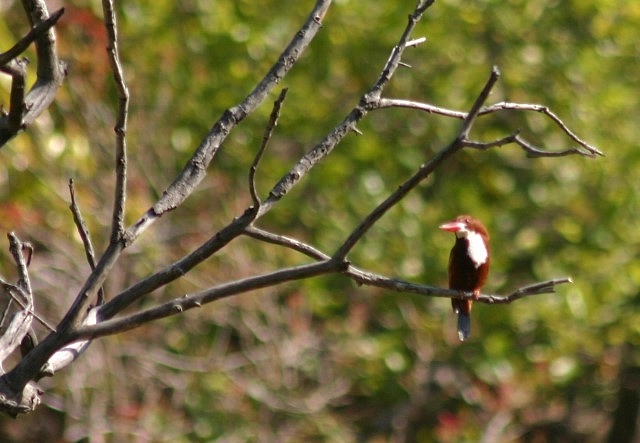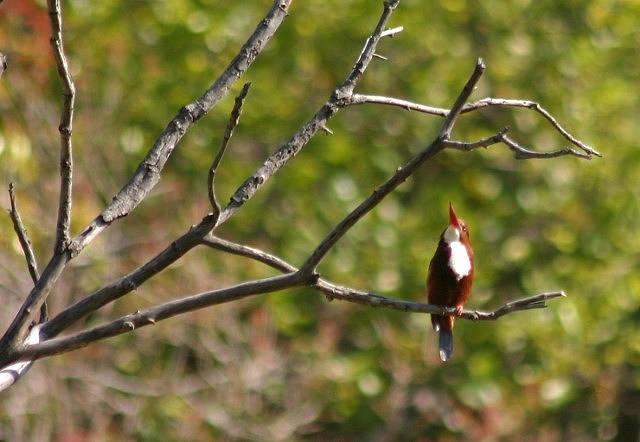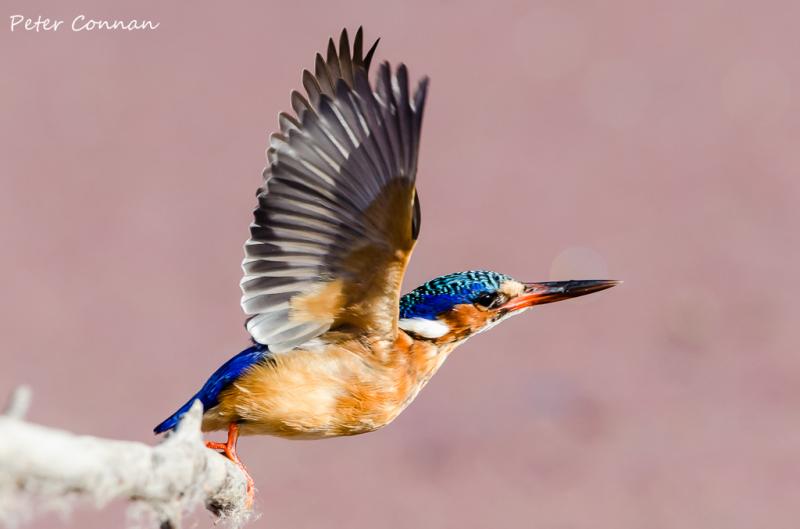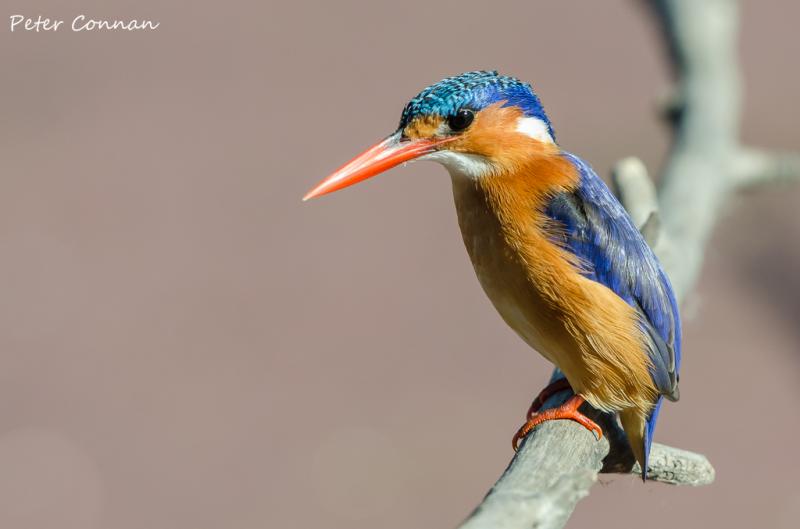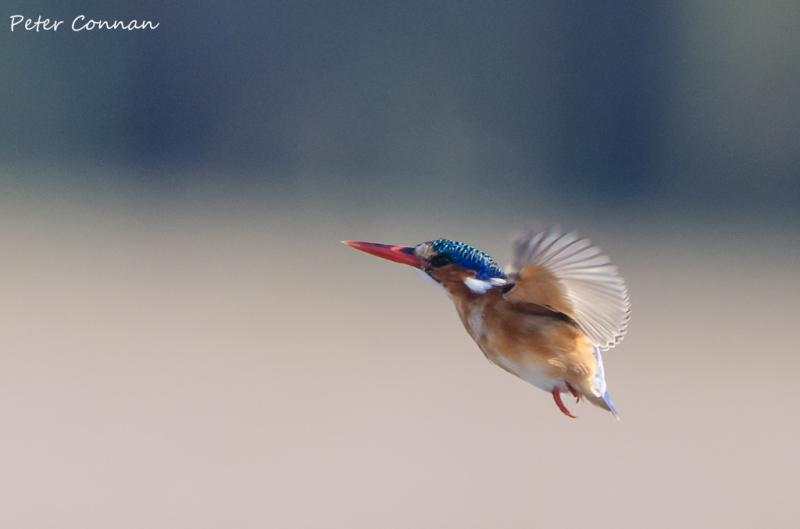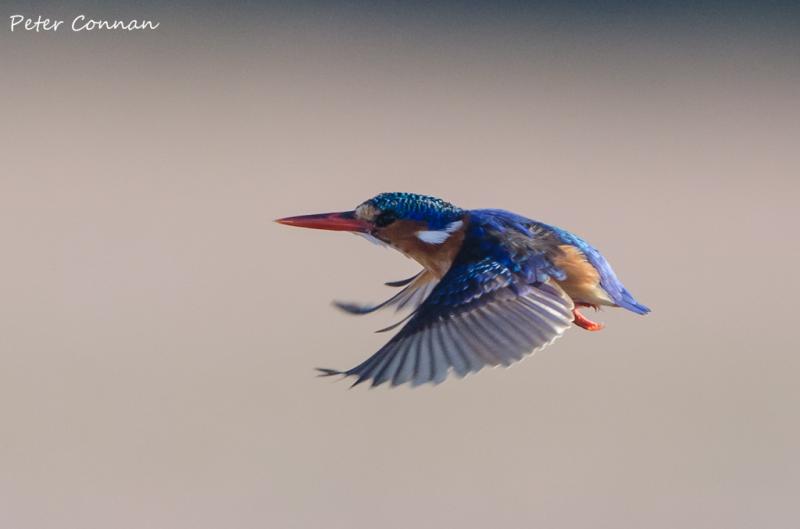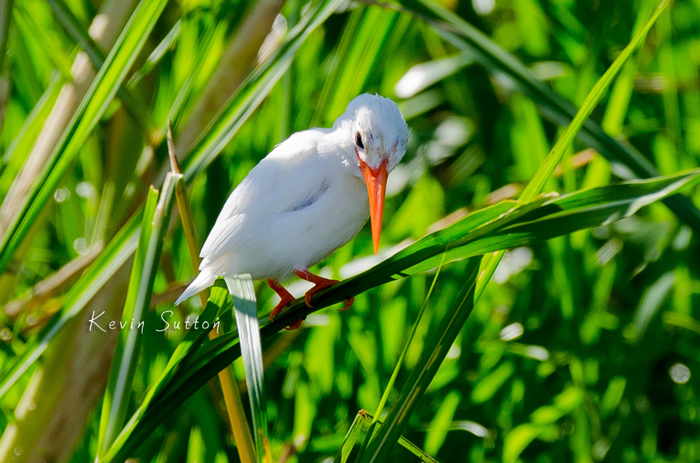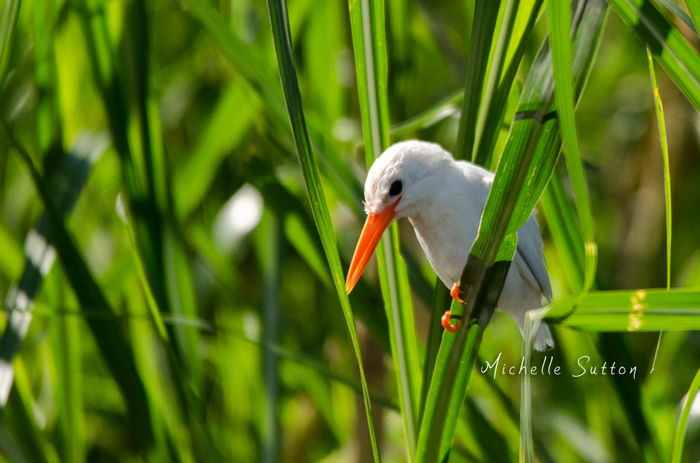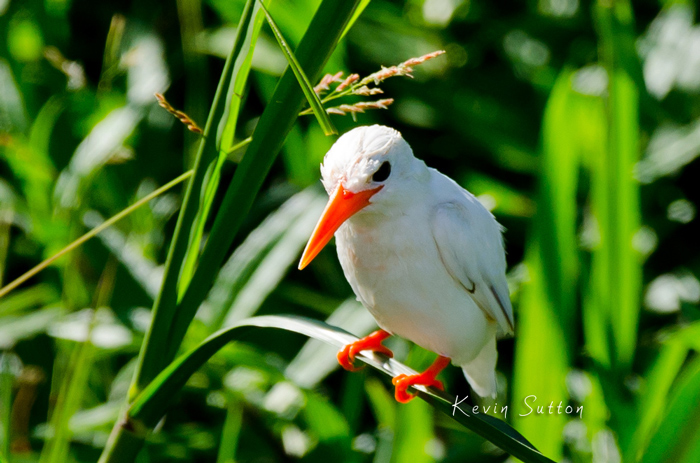Re: Kingfishers - Bird of the Month June 2013
Posted: Wed Jun 26, 2013 9:47 am
White-throated Kingfisher (Halcyon smyrnensis)
It is a tree kingfisher, widely distributed in Eurasia from Bulgaria,Turkey, West Asia east through the Indian Subcontinent to the Philippines.
It can often be found well away from water where it feeds on a wide range of prey that includes small reptiles, large crustaceans, insects, earthworms, small rodents, fish and frogs, small rodents and even birds.
This is a large kingfisher, 28 cm in length. The adult has a bright blue back, wings and tail. Its head, shoulders, flanks and lower belly are chestnut, and the throat and breast are white. The large bill and legs are bright red. In flight, large white patches are visible on the blue and black wings. Sexes are similar, but juveniles are a duller version of the adult.
The White-throated Kingfisher begins breeding at the onset of the Monsoons. Males perch on prominent high posts in their territory an call in the early morning. The tail may be flicked now and in its courtship display the wings are stiffly flicked open for a second or two exposing the white wing mirrors. They also raise their bill high and display the white throat and front. The female in invitation makes a rapid and prolonged kit-kit-kit... call. The nest is a tunnel (50 cm long, but a nest with a 3 foot tunnel has been noted) in an earth bank. The nest building begins with both birds flying into a suitable mud wall until an indentation is made where they can find a perch hold. They subsequently perch and continue digging the nest with their bills. A single clutch of 4-7 round white eggs is typical. The eggs take 20–22 days to hatch while the chicks fledge in 19 days.
It is a tree kingfisher, widely distributed in Eurasia from Bulgaria,Turkey, West Asia east through the Indian Subcontinent to the Philippines.
It can often be found well away from water where it feeds on a wide range of prey that includes small reptiles, large crustaceans, insects, earthworms, small rodents, fish and frogs, small rodents and even birds.
This is a large kingfisher, 28 cm in length. The adult has a bright blue back, wings and tail. Its head, shoulders, flanks and lower belly are chestnut, and the throat and breast are white. The large bill and legs are bright red. In flight, large white patches are visible on the blue and black wings. Sexes are similar, but juveniles are a duller version of the adult.
The White-throated Kingfisher begins breeding at the onset of the Monsoons. Males perch on prominent high posts in their territory an call in the early morning. The tail may be flicked now and in its courtship display the wings are stiffly flicked open for a second or two exposing the white wing mirrors. They also raise their bill high and display the white throat and front. The female in invitation makes a rapid and prolonged kit-kit-kit... call. The nest is a tunnel (50 cm long, but a nest with a 3 foot tunnel has been noted) in an earth bank. The nest building begins with both birds flying into a suitable mud wall until an indentation is made where they can find a perch hold. They subsequently perch and continue digging the nest with their bills. A single clutch of 4-7 round white eggs is typical. The eggs take 20–22 days to hatch while the chicks fledge in 19 days.
